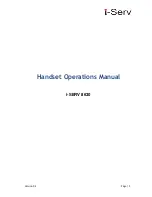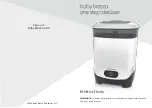
E T X T S O L I T H I U M B A T T E R I E S
19
Appendix A
DO-311A Test Summary
Test Description
Section
Reportable Information
Physical Examination
2.4.4.1
Passed functional performance per DO-311A,
Section 2.2.1.1
ATP
2.4.4.2
Passed functional performance per DO-311A,
Section 2.2.1.2
Insulation Resistance
2.4.4.3
N/R - Plastic non-conductive case, no heaters
Handle Strength
2.4.4.4
N/R, no handle on battery
Capacity
2.4.4.5
Passed functional performance per DO-311A,
Section 2.2.1.5
Capacity at Low & High
Temperatures
2.4.4.6
Passed functional performance per DO-311A,
Section 2.2.1.6
Constant Voltage Discharge for High
Rate Batteries
2.4.4.7
Passed functional performance per DO-311A,
Section 2.2.1.7
Charge Acceptance
2.4.4.8
Passed functional performance per DO-311A,
Section 2.2.1.8
Charge Retention
2.4.4.9
N/R - EUT is energy category 3, test only required
on category 4
Cycle Test for High Rate Batteries
2.4.4.10
N/R, -EUT is energy category 3, test only required
on category 4
Rapid Discharge at Short Time
Operating High Temperature
2.4.4.11
Passed functional performance per DO-311A,
Section 2.2.1.11
Short Circuit with Protection Enabled
2.4.4.12
Passed functional performance per DO-311A,
Section 2.2.1.12
Overdischarge
2.4.4.13
Passed functional performance per DO-311A,
Section 2.2.1.13
Overcharge
2.4.4.14
Passed functional performance per DO-311A,
Section 2.2.1.14
Short Circuit of a Cell
2.4.5.1
Passed functional performance per DO-311A,
Section 2.2.2.1
Short Circuit without Protection
2.4.5.2
Passed functional performance per DO-311A,
Section 2.2.2.1
Over discharge without Protection
2.4.5.3
Passed functional performance per DO-311A,
Section 2.2.2.2
Single Cell Thermal Runaway
Containment
2.4.5.4
N/R, this test is not required when thermal runaway
containment testing is done with two or more cells in
thermal runaway
Battery Thermal Runaway
Containment
2.4.5.5
Passed functional performance per DO-311A,
Section 2.2.2.4
Explosion Containment
2.4.5.6
Passed functional performance per DO-311A,
Section 2.2.2.5
Drop Impact Test
2.4.5.7
N/R, this battery is not for a portable device
Remarks
There is no deviation to the test requirements. If test is marked N/R, it is not required due to the battery construction or
battery energy category.



































